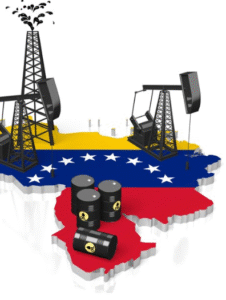$WTI $BRENT $OIL
#OilPrices #CrudeOil #WTICrude #BrentCrude #RussiaSanctions #OilSupply #EnergyMarkets #USPolicy #Commodities #OilRally #GlobalMarkets #EnergyCrisis
The rally in oil prices that began last week has extended into the new trading week as the energy markets absorb the full impact of stringent U.S. sanctions imposed on Russia’s oil sector. The Biden administration’s decision to escalate measures against Moscow by directly targeting its leading oil executives and shipping operations is reshaping global crude dynamics. As of midday Monday, WTI crude futures for February delivery traded at $78.77 per barrel, reflecting a 3.0% gain. Meanwhile, Brent crude futures for March delivery climbed to $81.18 per barrel, marking a 1.8% increase. These upward movements underscore how geopolitical developments are once again playing a significant role in pressuring supply expectations and influencing investor sentiment.
The sanctions reportedly impact approximately 180 vessels and add key Russian oil executives to the sanctions list, further restricting one of the primary conduits for transporting Russian crude to global markets. While details of the U.S. Treasury document linked to these sanctions remain unrevealed, traders across Europe and Asia are already responding by recalibrating pricing models. The response has also sparked fears of tighter oil supplies in an already precarious global market. Financial analysts project that the reduced availability of Russian barrels could tighten the supply-demand balance further, pushing crude prices higher in the coming months, especially if alternative sources of crude fail to meet the deficit.
From a broader market perspective, the rally in oil prices is likely to have multi-tiered ramifications. U.S. consumer inflation, which has shown signs of stabilizing, could face renewed pressure in the energy component, with higher gasoline and heating costs potentially feeding through the core inflation basket. For markets, energy-sensitive sectors such as airlines and logistics may confront margin compression, while traditional oil and gas stocks could see increased investor interest if higher prices persist. Over in the commodities market, the price action in WTI and Brent has reignited bullish sentiment among traders and hedge funds, with speculative positions reportedly on the rise.
On the geopolitical stage, the U.S.’s hardline stance against Russia underscores the growing intersection of foreign policy and energy strategy. By targeting energy exports, the Biden administration aims to tighten the financial noose on Moscow while reaffirming support for Ukraine. However, such moves could unintentionally feed global volatility, particularly if other oil-exporting nations like OPEC decide to scale back production to manage price swings. The outcome could see a recalibration of energy alliances globally, adding another layer of complexity to an already fragile market landscape. As these sanctions continue to ripple through the market, all eyes will remain on weekly inventory data and whether further escalatory steps might be taken.











Comments are closed.